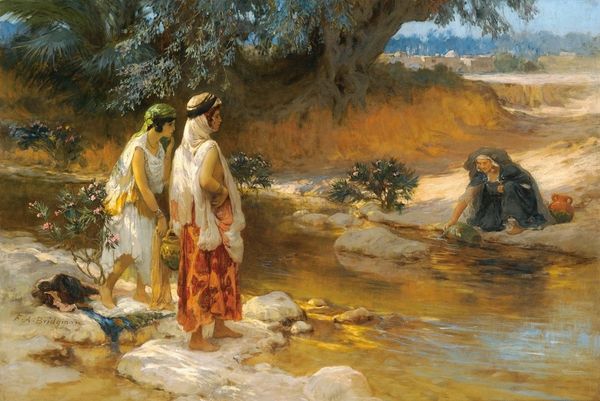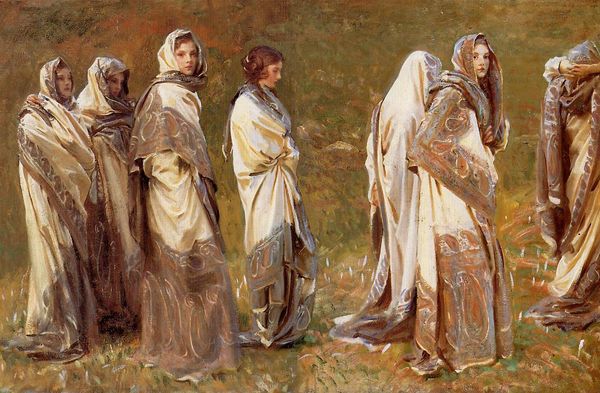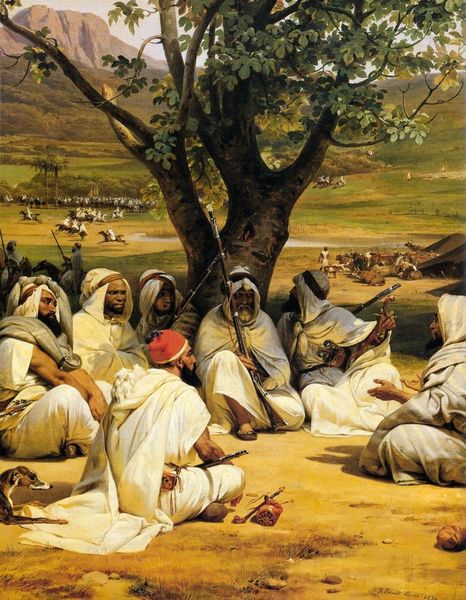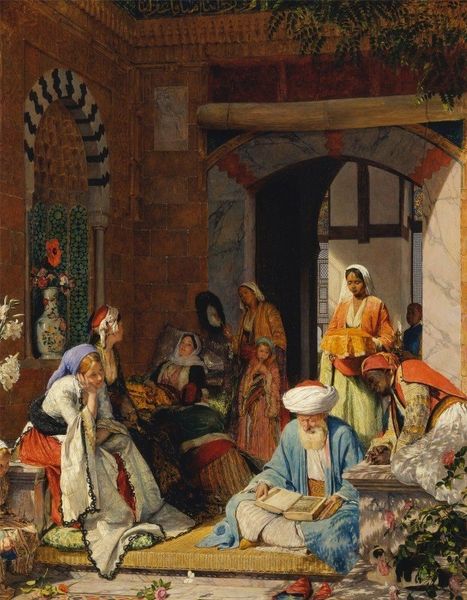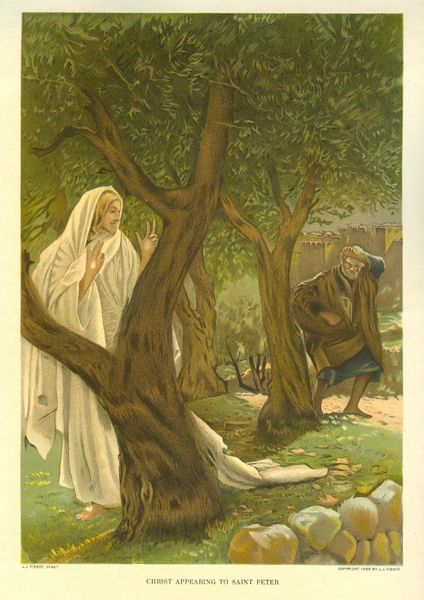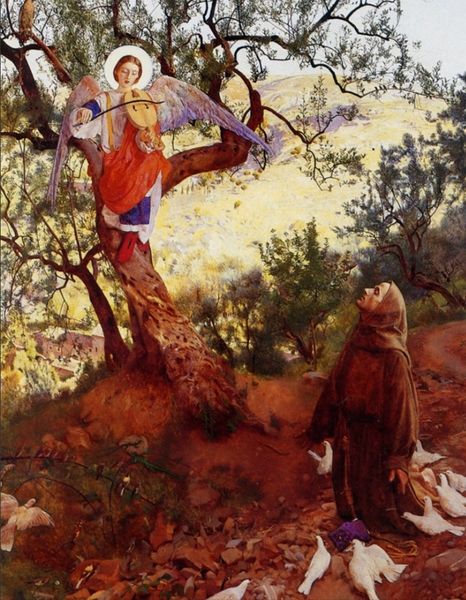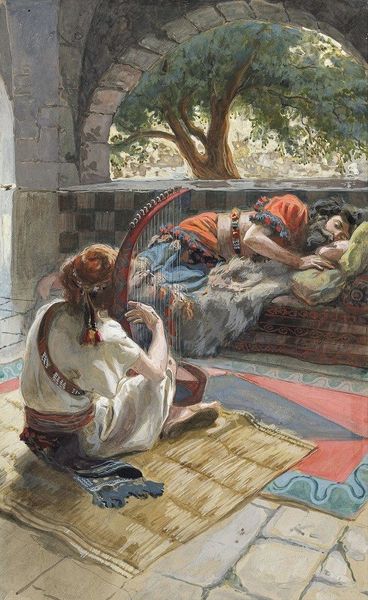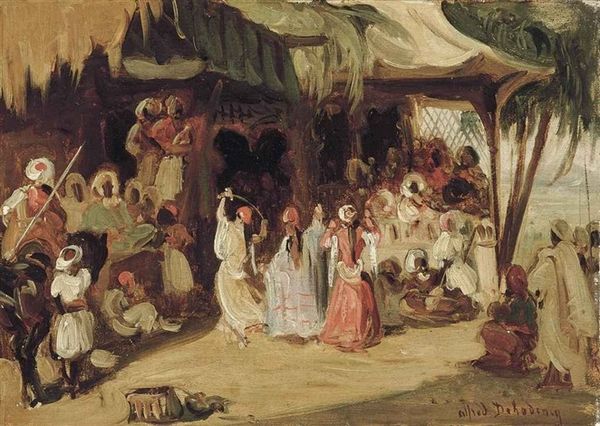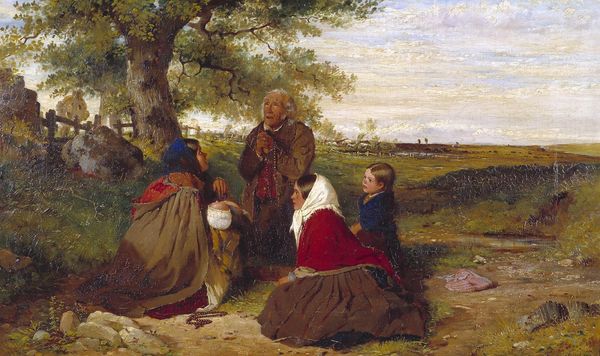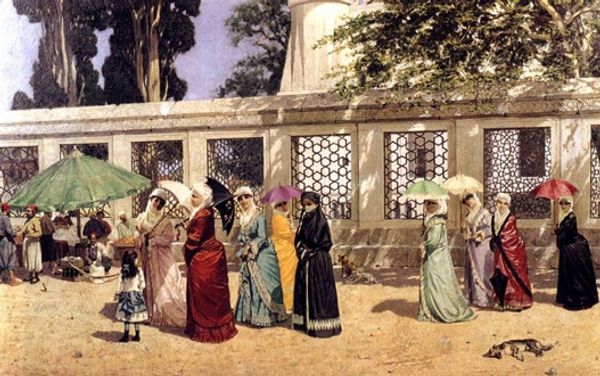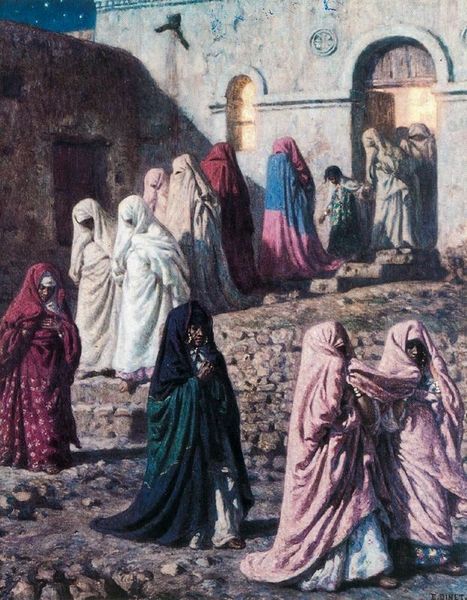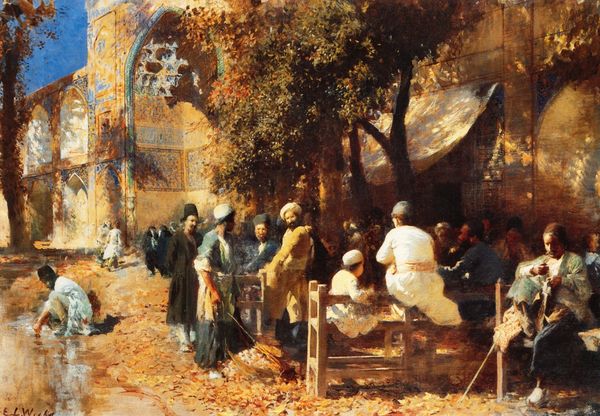
oil-paint
#
portrait
#
fantasy art
#
oil-paint
#
oil painting
#
romanticism
#
animal portrait
#
orientalism
#
mythology
#
painting painterly
#
history-painting
#
academic-art
Copyright: Public domain
Editor: My initial reaction to Gustave Boulanger’s “Reception of an Emir” is one of mild curiosity mixed with reservation. The tableau vivant feels somewhat staged, but there’s something undeniably arresting about the color palette. Curator: It's quite revealing to see that interplay of color unfold. Let’s dive into it. Note the almost academic construction: pyramidal composition, classical rendering of figures...Boulanger’s strategic use of bright hues draws attention to certain characters. Editor: And yet, the luminosity and texture strike me most forcefully here, particularly in rendering the garments. Considering that it is rendered in oil paint, how much would the price of pigments dictate the choices the artist made? That lush red… I wonder about its source. Curator: Ah, a very valid material consideration. What's most interesting is how Boulanger, through his brushstrokes, creates an entire symbolic structure of power relations. Observe how the figures in the foreground dominate the frame through their poses and commanding dress. This communicates so much about their roles in this tableau. Editor: The clothing tells another story too, one of laborious creation; consider the embroidery and fine detail. But I think the choice of the materials used for the garment – linen or cotton – also indicate the place and cultural origins. What is this painting suggesting about global trade and its raw material acquisition? Curator: Indeed, clothing here as visual marker – as constructed artifice and display of the Orientalist fantasy. Boulanger masterfully manipulates light and shadow to create an aura of exoticism, perpetuating romantic ideals through strategic artistic choices. That deliberate theatricality – are we seeing a truth or carefully constructed representation? Editor: We are looking, instead, at a visual depiction of cultural fantasy—how the Western world exoticizes others, even if inadvertently, and that speaks directly to socio-economic production models, market values and raw materials like the dyes for textiles involved here. Curator: It challenges us to think about perception – as well as presentation – and to examine how structures of form can be so subtly infused with, but also betray, layers of political messaging. Editor: Exactly. By looking at these power dynamics and raw materials, we also reflect on labor that has enabled the scene depicted and critique whose stories get represented through paint on canvas.
Comments
No comments
Be the first to comment and join the conversation on the ultimate creative platform.
